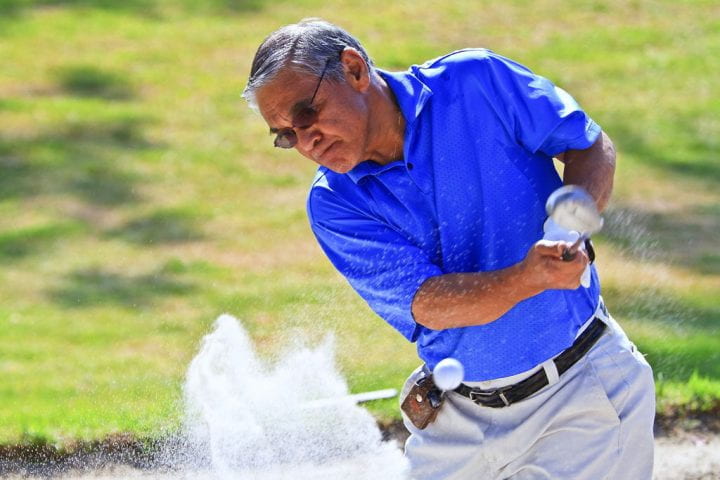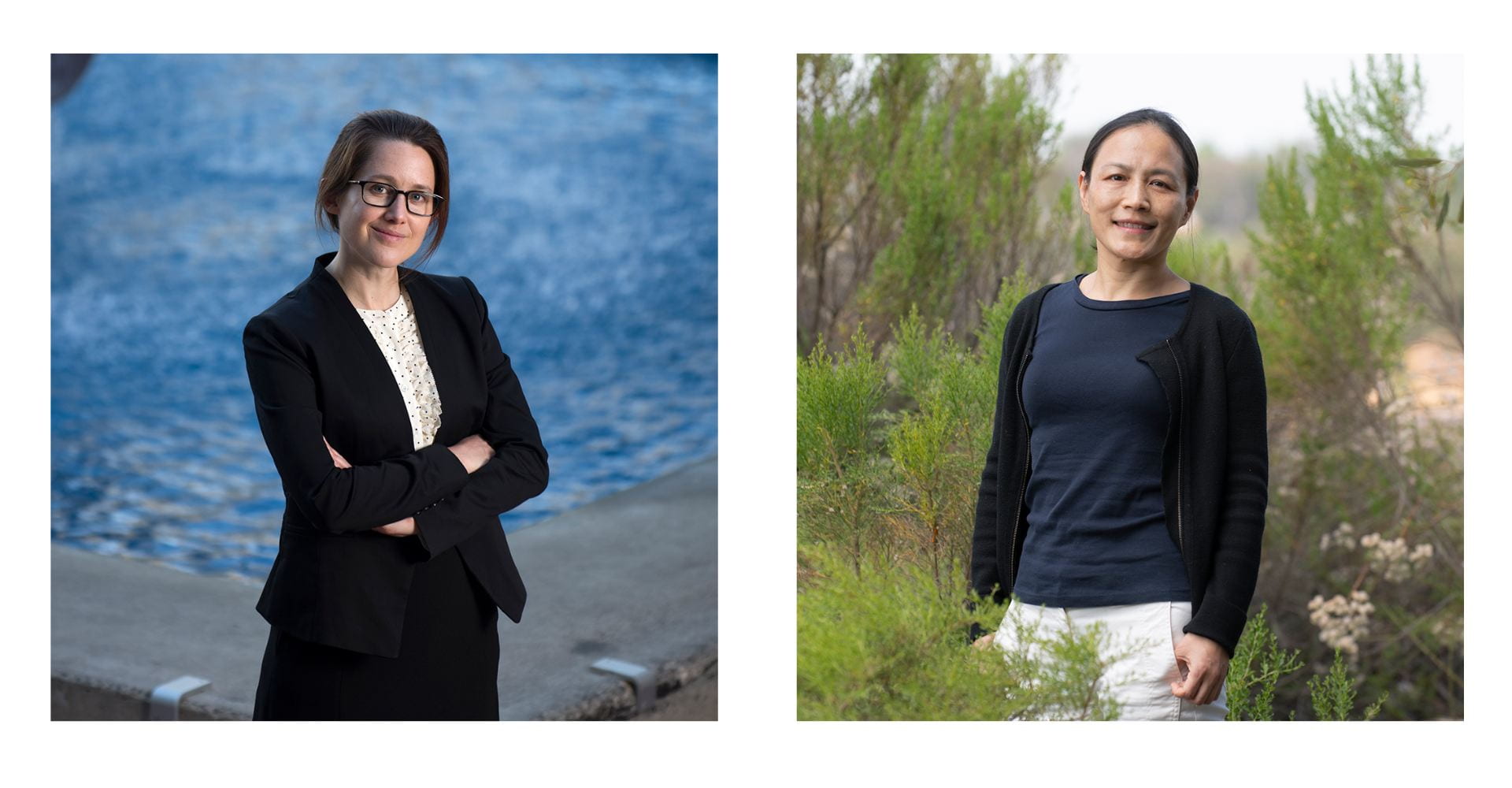Surgical team puts golfer back in the swing
Rey Buack is among 10 percent who survive ruptured aortic aneurysm, thanks to UC Irvine Medical Center surgeons.

His beloved Lakers were winning by nine points on June 8 when Rey Buack stood up from his couch to stretch. Out of nowhere, the 58-year-old startup company executive was felled by excruciating stomach pain.
“Something is ripping my stomach,” he shouted to his wife, Shirdellah. “Call 911!”
Paramedics arrived at the Yorba Linda home within five minutes. On the way to the nearest hospital, Buack kept urging them to drive faster. From the first, the emergency room physician at the community hospital suspected a rupture of the aorta, the body’s largest artery.
“The doctor said, ‘I think I know what it is, but let’s get him a CT scan and contact UC Irvine Medical Center,’” Buack recalls. The scan confirmed a ruptured aortic aneurysm, as did a glance at his darkening abdomen, which had ballooned with pooling blood.
“An aortic aneurysm is a silent killer,” says UC Irvine’s Dr. John S. Lane, who specializes in vascular and endovascular surgery. “When a rupture happens outside a medical setting, it’s fatal about 90 percent of the time.”
But 32 days later, Buack was back on the golf course, thanks to the stent Lane had quickly implanted to patch his patient’s torn blood vessel. “Even though it took well over an hour to get to UC Irvine Medical Center, they were still able to save me,” he says of the cardiovascular team that performed the minimally invasive surgery.
Lane also was riveted to Game 3 of the NBA finals when he got the call about Buack and determined that he was stable enough to make the 10-mile ambulance trip from the community hospital to UC Irvine Medical Center, in Orange.
“It’s a credit to our clinical team that there was no further delay – Buack went straight up to the operating room, where everybody was ready and waiting,” says Lane, who arrived in UC Irvine Douglas Hospital’s state-of-the-art surgical suite at the same moment.
While the necessary lines and monitors were quickly connected, the surgeon checked the CT scan and Buack’s vitals. The rupture was in an optimal spot to insert a stent graft through the groin’s femoral artery, Lane decided, and the patient was strong enough to withstand the procedure.
Before such minimally invasive techniques were perfected, repairing ruptured abdominal aortic aneurysms involved major surgery and a long incision down the midsection, opening the area to infection as well as risking a deadly loss of blood pressure. Patients could count on lengthy hospital stays, considerable pain and many weeks of recuperation.
Although minimally invasive procedures have proven safer for people with ruptured abdominal aortic aneurysms, community hospitals rarely have an on-call cardiovascular surgeon who is skilled in the technique.
“Open abdominal surgery has a 50 percent chance of mortality because you have a hole in a major blood vessel,” says Lane, who performs at least 50 such repairs each year. “If you open the containment area, a patient’s blood pressure drops and his organs fail. We’ve found that mortality is much less – about 15 percent – with minimally invasive procedures.”
Many local hospitals also cannot afford to stock expensive stent grafts in a variety of sizes, especially one long enough to close the more than 3-inch tear in Buack’s blood vessel. His stent graft is a wire cage made of a titanium alloy and sheathed in a fabric that protects the lining of the aorta. It resembles a pair of pants that, once expanded to snugly fit inside the aorta, directs blood through the “waist” segment above the rupture and down its two legs, which feed into the femoral arteries, Lane says.
After the stent surgery – which took just 90 minutes, versus about five hours for open abdominal surgery – Buack was wheeled to the intensive care unit, where he was monitored for possible leakage around the repair site and to ensure that his body would begin reabsorbing the pooled blood.
When Buack was discharged nine days later, directly from the intensive care unit, “I had a 44-inch waist – it’s normally 32,” he says. “I was purple and black all over, like I’d been pummeled. But my kidneys and organs were all functioning well, and because I had no underlying disease, my prognosis is real good. They tell me my stent will outlast me!”
“His life expectancy is what it was before the aneurysm,” agrees Lane. “He’s returned to golfing and running his business. We’ll monitor him every six months or so, but really there are no limitations for him.”
Back in 32-inch-waist pants, Buack is playing 18 holes of golf again and is working full time on his software venture in Irvine. He’s aiming to build his stamina for two-hour tennis games by the first anniversary of his ruptured aneurysm.
Buack’s three grown daughters, all of whom were with him during his hospitalization and early weeks of recovery, get more frequent calls from Dad. And he and Shirdellah go out more often now. “I’m trying to enjoy life a little bit more,” he says. “Life is so precious.”
Buack is grateful to Lane and the entire hospital team: “I can’t say enough about the excellence of the medical staff and facilities at UC Irvine. They even allow family to stay with you in the intensive care unit.”
